‘If you want to be T-O-P,
You gotta make it B-I-G.
You can’t be an F-L-O-P,
So you want to be top!’
I remember watching So You Want to be Top? I remember the opening titles of So You Want to be Top? (and, indeed, still sing them to myself on occasion). I remember the beaming smile of the host during So You Want to be Top. I remember the teams of children on So You Want to be Top?
However, I have to be honest here. I don’t remember AT ALL what actually happened during So You Want to be Top?
From the title alone I think we can infer that it was some kind of kids’ game show but it isn’t one that has really stuck in the public’s consciousness in the way that ones like Crackerjack or Tiswas have, so I’m going to have to do a bit of research in order to describe it to you…
So, let’s see. It was a BBC One children’s show, with a ‘school’ theme, usually shown on either a Tuesday or a Friday afternoon. The first episode was shown on 7 November 1983 and it ran for three series until December 1985. It was created by 17 year old student Ian White and writer John Langdon and the producer, Judy Whitfield, moved on from So You Want to be Top? to the heady heights of The Tweenies, a pre-schooler programme whose sets look like primary colours have vomited all over it.
The presenter was the singer and comedian and now successful theatre actor, Gary Wilmot, who was joined, for a time, by both Kate Copstick (I’ve heard of her) and Bill Homewood (no idea). Wilmot also sang the catchy theme tune.
Wilmot first became famous when he appeared on ITV’s talent show, New Faces, a programme that also launched the careers of many other celebrities including Victoria Wood, Lenny Henry, Patti Boulaye and Roger De Courcey. It did the same for Jim Davidson as well though, so it can’t be considered a completely positive memory.
Gary appeared on New Faces as part of a comedy duo, with somebody called Judy McPhee. They didn’t win but they made it to the final of that series. His performance spring-boarded him to appearances on popular programmes of the day, such as The Keith Harris Show (Keith Harris was, of course, famous for forming a double act with a large green bird who could speak but lacked self-confidence and toilet training skills) before he was offered the chance to present his own.
So You Want to be Top? was a 30 minute mixture of silly games and sketches and, as all children’s programmes apparently have to be, by law, was filled with puns. It received criticism during the final series as, instead of the real school kids who had appeared during the first two, it was changed to instead feature scripted young actors who only pretended to participate during the games. There must be a reason why they decided that taking away a great deal of the programme’s spontaneous fun was a good idea but I’ll be beggared if I know what that could have been.
The children were given scores after each game through the use of a clap-o-meter; the more the audience (more kids) cheered the better the score that the contestants got. The scores were kept in the first series by the Gemini Twins (I have no recollection of them and a quick Google search only brings up articles about constellations and pictures of actual twins…) and in the last two by Leni Harper. Harper is an actor from Scotland who is (or was) most recognisable as Madeleine the housekeeper in the TV sitcom Me and My Girl and some appearances on Chucklevision. When scores were revealed Gary would utter the catchphrase ‘So the Creeps are top of being bottom and the Crawlers are bottom of being top!’ (The two teams of two kids were called the ‘Creeps’ and the ‘Crawlers’, see?)
It wasn’t a catchphrase heavy show but there were a couple of others that always made an appearance. Leni would call out ‘Mark ‘em, top kids!’ when she wanted the audience to activate the clap-o-meter and Gary would call ‘Miss Harper – to the scoreboard, please!’ when it was time to see the current standings.
Also part of the show was a series of adverts for pretend products made by imaginary company Top Kid – these were always fairly daft and, therefore, popular with young viewers. They often featured devices that could get you off of school (such as a thermometer that registered you as feverish when you weren’t).
So You Want to be Top? will never be remembered as a masterclass in children’s television but it had some good moments. Wilmot’s zany presenting style was a huge contribution to the success that it did receive – he genuinely had a good rapport with the ‘normal’ children in the studio (before they were all spirited away and replaced by stage school darlings) and kept the energy levels high.
In general, you would think that a programme about school would be the last thing kids getting in from a day at school would want to watch but So You Want to be Top was just the right amount of wackiness and anti-school mild anarchy to make it a pretty good way to zone out on the sofa with when you got home.
(Grange Hill was obviously the most popular programme about school but with its frequent references to bullying, drugs and other ‘gritty’ drama, it certainly wasn’t a relaxing watch.)



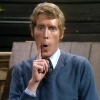
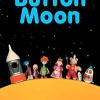

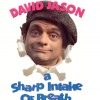
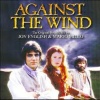
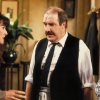
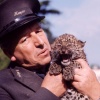
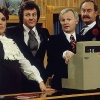
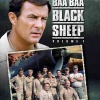
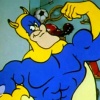
Do You Remember So You Want to be Top ?
Do You Remember So You Want to be Top ?